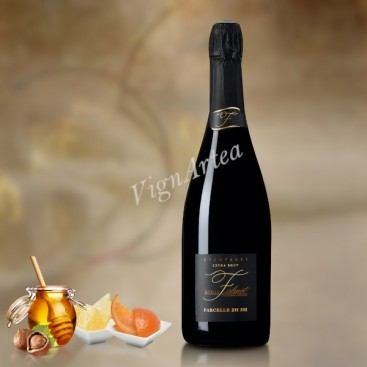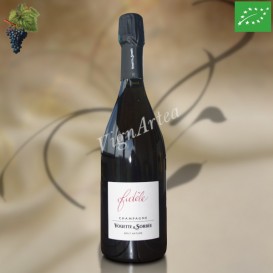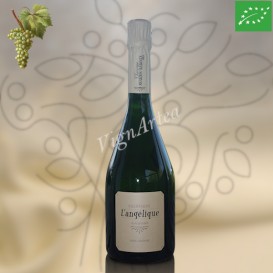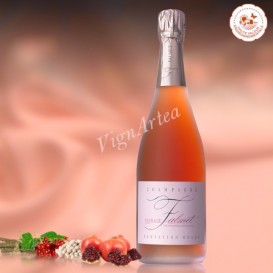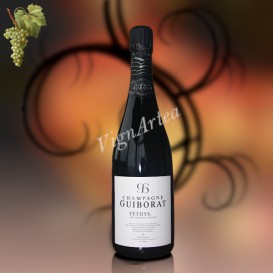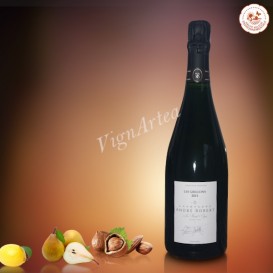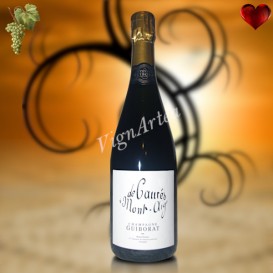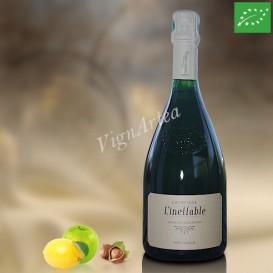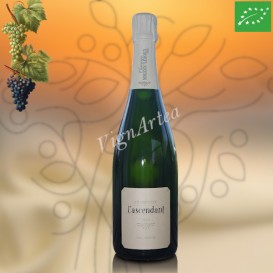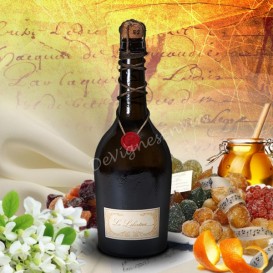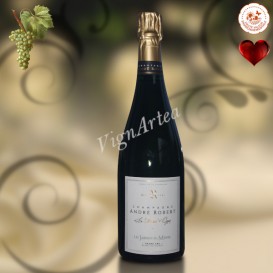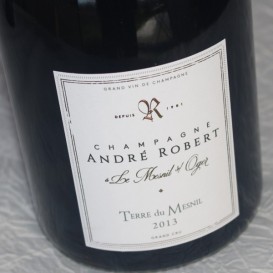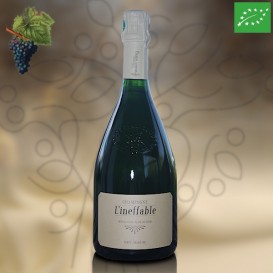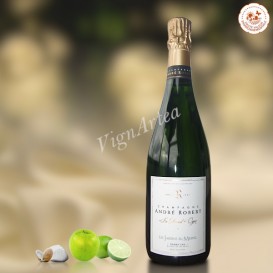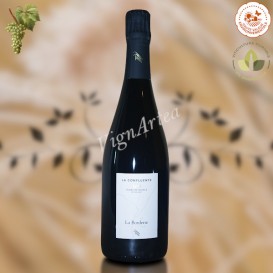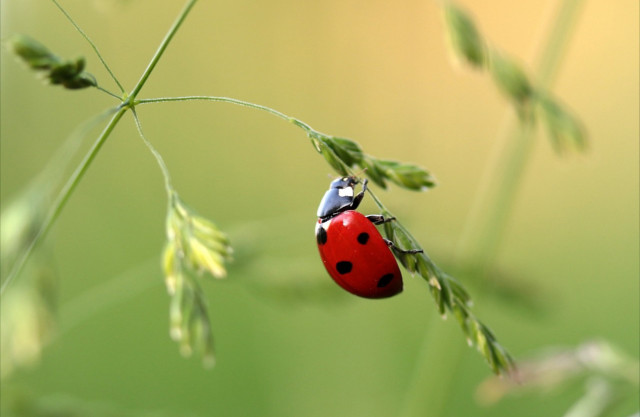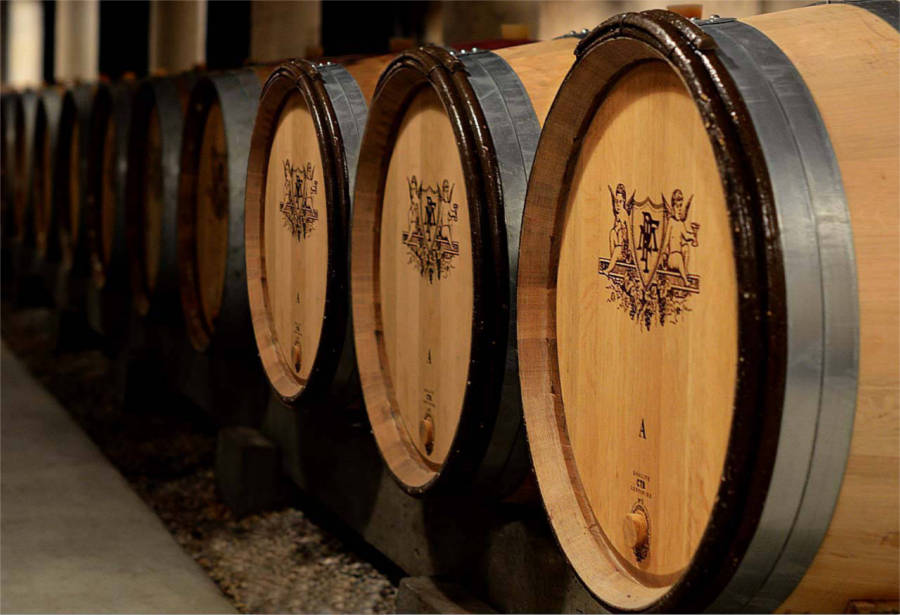CHAMPAGNE ZH 302 - R 2011 (Champagne Nathalie FALMET)
COTE DES BAR - AOP CHAMPAGNE - BLANC DE NOIRS CHAMPAGNE
Grape variety: Pinot Meunier (100%)
Extra-Brut Single-Plot Sugar addition: 0 g/l
Winemaking in 350-liter oak barrels
Complex - Honeyed - Tonic.
- Nose: generous and complex. Clover honey, candied citrus, praline and roasted hazelnut.
- Palate: beautiful tension. Very fine bubbles and a long lemony finish.
- Tasting date: January 2021
- OUR OPINION: complex - honeyed - tonic. What an energy for this 2011 champagne with a beautiful aromatic complexity!
The exceptional bottle's weight (1.8kg) may result in higher shipping costs for the final shopping cart.
DESCRIPTION
The champagne ZH 302 is a 100% Pinot Meunier champagne made from a single year and a single parcel registered under the reference ZH 302 and located at Le Val Cornet place.
Although it is produced from a single year's harvest, this champagne is not considered a vintage champagne in the administrative sense of the term.
TERROIR
The soil of the ZH 302 plot dates from the Kimmeridgian period (-154 to -150 million years) and is composed of three layers of marls separated by two layers of limestone, rich in marine fossils.
The sedimentation of this soil took place in a deep marine environment, as the region was then covered by the seas. In the Middle and Upper Jurassic, the earth's crust gradually sank, which led to a major marine transgression and an increase in marl sediments.
In the Tertiary period (-65 to -3 My), some Mediterranean orogenic movements (mountain-building processes), caused in the region some folding and faulting processes, which brought to the surface the Jurassic marl-limestone bedrock that forms the current ZH 302 plot's soils.
WINEGROWING & WINEMAKING
The Pinot Meunier vines that make up this cuvée were planted in 1974. They are cultivated according to the principles of the Sustainable Winegrowing which means that the plants are only treated when necessary.
The grapes are picked by hand. They are taken to the winery where a slight dose of sulphits is added to the harvest, and the grapes are immediately pressed. The juice is then transferred into 350-litre barrels.
The winemaking process is carried out without the addition of any oenological products, with the exception of the sulphits addition on the harvest and the use of fermenting yeasts which are selected to be neutral and added to the must to ensure that the alcoholic fermentation proceeds smoothly. The malolactic fermentation starts spontaneously as soon as the alcoholic fermentation is complete. The latter reduces the acidity level of the must, giving it a little roundness and guaranteeing the microbial stability of these champagnes that Nathalie Falmet intends to mature for a long time.
Once the fermentation is complete, the musts are blended and then racked with a cold tartaric stabilisation process.
The liqueur de tirage is added for the second fermentation and the bottles are placed on slats for an ageing period of about 6 years.
After disgorgement, no sugar is added, so it is a Zero-dosage (Brut Nature) champagne, even if the label simply indicates 'Extra-Brut'.
- Vintage: 2011
- Racking date: March 2012
- Disgorgement date: 28 June 2018
- Slats ageing: 6 years
- Sugar addition: 0 g/l
| Country | Champagne |
| Color | White |
| Orange wines | No |
| Clay amphorae wines | No |
| Blanc de Noirs | Yes |
| Type | Extra-Brut |
| Vintage | Harvest 2011 |
| Capacity | 75 cl |
| Single Grape Variety | Pinot meunier |
| Alcohol rate | 12 % |
| Quality Designation | Champagne |
| Cellar Potential | 10 years. |
| Service advise | 10-12°C (50-54°F). Open 1hr before the service. |
| Culture Methods | Sustainable cultivation method |
| Total SO2 | 32 mg/l |
| Sugar addition | 0 g/l |
| Fining | No |
| Filtering | No |
| Comments | Winemaking in 350-litre oak barrels ♦ Malolactic fermentation done ♦ Slats ageing for 6 years ♦ No sugar addition after disgorgement. |
Ce champagne est doté d'une belle tension qui lui permet d'accompagner un repas complet.
En apéritif, on le servira sur des canapés au saumon, des gougères au fromage ou un kougelhopf salé.
Au repas, il fera un mariage parfait avec un bar ou une dorade cuits au four, des dos de merlu saisis à la poêle ou un filet de truite grillé accompagné de noisettes légèrement toastées.
Et pour le dessert, on se tournera vers les gâteaux de type gâteau basque.

